The inventor of the printing press, as is well-known, is Gutenberg, or to give him his full name: Johannes Gensfleisch zur Ladem zum Gutenberg, and the birthplace of Gutenberg and the art of printing is Mainz. Gutenberg was a difficult man who preferred to work in secrecy. None of the books he printed bear his name, nor are they dated. This opened the door to alternative versions of the invention’s story. Avignon and Strasbourg tried to claim the honor. However, the most famous alternative inventor is Laurens Jansz Coster from Haarlem. Coster’s claim was taken seriously by scholars until the 1940s.
In the “real world,” not everyone is convinced that Gutenberg is the inventor. There, the story of Coster is told with relish. He was walking in the Haarlemmer Hout with some children, and to amuse them, he carved letters into the bark of a branch. The branch fell into the sand, and Coster saw an imprint of that letter in the sand. In a flash, he conceived the entire process of making, setting, and printing letters and established the world’s first printing house in Haarlem. But Coster had a German assistant named Faust. On Christmas Eve, Faust absconded with the type, taking it to Mainz, where he sold his loot to none other than Gutenberg. Gutenberg gained fame with the invention, while Faust, consumed by envy and remorse, hanged himself.
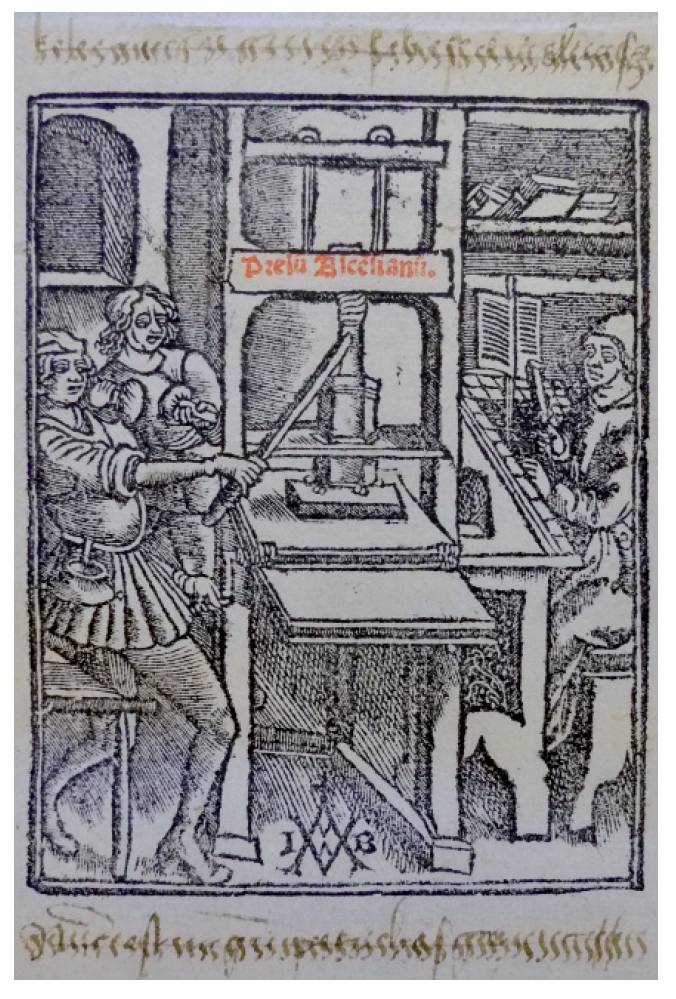
Sixteenth-century printer’s mark of the Parisian printer Josse Bade. There isn’t much that’s accurate in this image, which is remarkable because it was commissioned by a printer.
So, what did Gutenberg exactly invent? The complete printing process consists of a series of widely varying and often complex actions that the inventor had to conceive one by one. How do you come up with something like this? It probably started with a simple idea: that you print words on a sheet of paper instead of writing them. Naturally, you’d want to use both sides of the paper, just like in handwritten books. Then, you realize that it would be practical to print more than one page per side of a sheet because you can fold the printed sheet into a quire. Bookbinders find it much easier to make a book from such quires with four, eight, or more pages than from loose sheets with two pages printed on each.
However, Gutenberg’s most important invention was the individual letters that could be used repeatedly to compose texts. In China, complete pages of text had been carved into wooden blocks for centuries. We also have block books in the West, and for a long time, it was thought that these were precursors to Gutenberg’s work. Block books look more primitive than books printed with individual letters, even though they are from a later period. This is because our letters, with their complex shapes and small sizes, are hardly suitable for a method where you carve an entire page into a wooden block. Chinese characters do not have this problem.
After Gutenberg realized that he needed to print with individual letters, there was the matter of the material. Wood is too soft and fragile to be used on the printing press in this way, and cutting individual wooden letters is too difficult, if not impossible. Gutenberg cast his letters in metal. This required a matrix. How could you make one? In the 15th century, casting in sand was used, with the model to be cast being pressed into densely packed, damp sand. The mold was filled with molten metal. For small letters, sand casting was not refined enough, and a sand mold could only be used once. It would still be very time-consuming to cast the thousands of letters needed to print a single page. Gutenberg devised another method. He created a permanent metal matrix placed in a casting mold. An ‘m’ is wider than an ‘n,’ while the stem of ‘d’ is longer than that of ‘t,’ so the casting mold, on the bottom of which the matrix was placed, had to be variable. The typecaster placed the matrix in the mold, closed it, and then poured the molten lead through an opening at the top. He did this while shaking the mold to ensure that the molten lead penetrated all corners and crevices. The lead solidified within a few seconds, after which he opened the mold, allowed the still-hot type bar to fall out, and then closed the mold again to make the next letter.
We do not know what Gutenberg’s casting instrument looked like. The earliest descriptions and images of a casting mold date from almost a hundred years later. With such a casting instrument, a type caster was expected to cast at least four thousand letters per day.
The raw material for the letters was expensive, so the quantity of letters varied from printer to printer. The minimum quantity naturally had to be sufficient to fully print at least one sheet of paper (which contained multiple pages!) on one side.

A casting mold doesn’t resemble a bottle. It consists of two pieces of metal with a variable opening in between. The mold is at the bottom. At the top, the boiling lead is poured in. After that, the mold is opened, and you let the glowing letter drop.
These letters were cast from an alloy of lead, tin, and antimony. Antimony is a rare metal with a remarkable property: unlike almost all other substances, it expands when it cools. This ensures that the molten metal fills the casting mold even in the smallest corners and does not stick to it. Moreover, it makes the “type metal” hard and durable.
In the fifteenth century, printers were closely involved in making the type they used, if they did not produce it themselves. From the early sixteenth century, type cutting and type casting became the work of specialists who sold their products to printers. However, in later centuries, some printers continued to cut their own type, while others purchased matrices from independent type cutters and cast their own type. The majority of printers bought ready-made type from specialized type foundries or from fellow printers who had their own foundries.

Stamps used to strike the matrices that were then used to cast letters.
The most challenging part of type production was undoubtedly type cutting. A letter was cut from the end of a steel rod, called a punch, using a sharp chisel. The steel was hardened in a fire once the maker was satisfied with the trial impression. The letter was then struck into a copper plate, creating a matrix, a hollow form into which lead could be poured. A leaden letter consisted of the actual letter, which was usually less than a millimeter high, placed on top of a rectangular lead bar approximately two centimeters tall.
Carving a single letter is already difficult, but designing and carving a complete set of letters is even more challenging. The letters in a related typeface are not identical, of course, but they must be clearly related. They must not only be exactly the same height but also match in width and detail. The virtuosity of the letter cutter becomes evident in the designs of such a recognizable typeface. The fame of letter cutters like Gutenberg, Jenson, and Garamond is well-deserved.
Contemporary illustrations show how compositors, with the typeface in mind, took one letter at a time from the type case on a small lectern. After composing a few lines, they transferred the type to a stone table, known as the “stone,” where the pages that belonged together were arranged in the correct order. The wooden or metal frame containing the type for one side of a sheet to be printed was called the “forme.” Once the forme was complete, the type was secured - locked in - by tightly clamping it with wooden wedges. It was then ready to be placed under the press. An experienced compositor could set around two thousand characters per hour. Compositors were often called “monkeys” because of their dexterity.
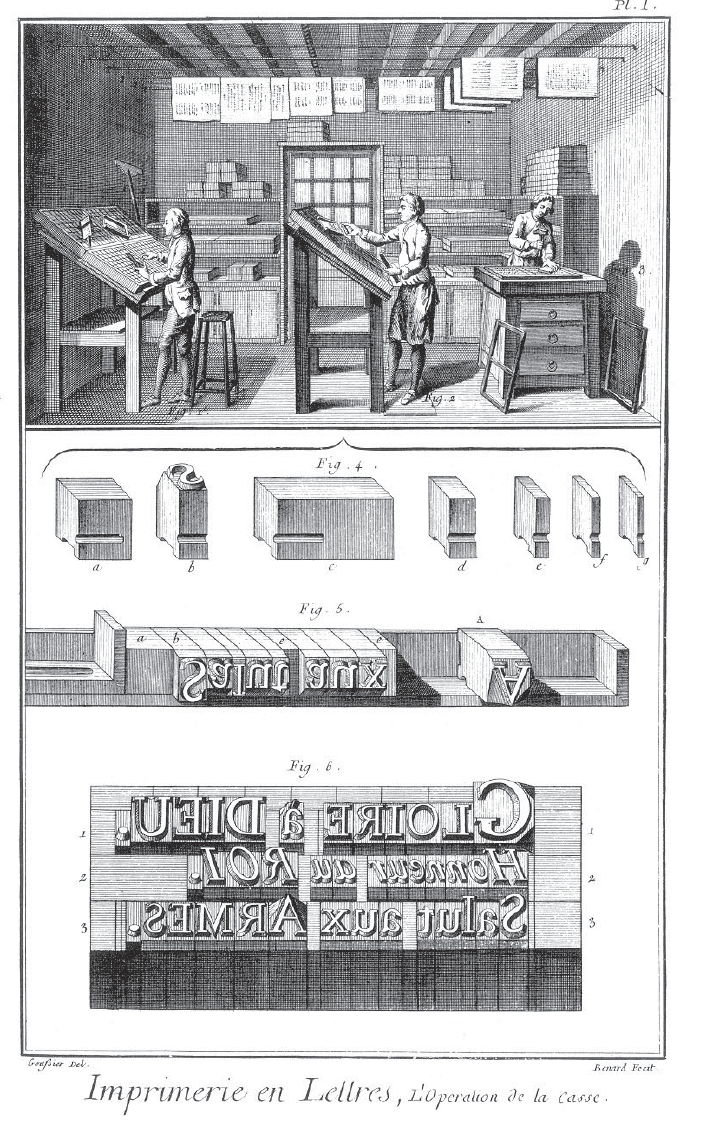
We see two typesetters at work, a third one gently taps the composition of several pages so that it lies flat under the printing press. Below are individual letters, a composing stick, and three lines of text in reverse.
When one side of a sheet was printed, the type for the pages placed in that forme could be reused. For this, the type had to be thoroughly scrubbed with a strong detergent since it was covered in stubborn ink, detached, and redistributed in the compartments of the type case. Afterward, it could be used for the next part of the text. This disassembly and reuse of type played a significant role in research into how printing houses operated. The famous Antwerp printer Plantin possessed so much type material that he did not have to disassemble type immediately after one side of a sheet was printed. He could, figuratively speaking, save the type for a complete book for a possible second edition. Other printers around 1600 owned much less type material and were constantly engaged in washing, disassembling, and reusing their type. It might seem like an inconsequential detail, but it’s not.
The quantity of type a printer had determined the way in which setting was done. An example can illustrate this. A quarto book consists of sheets of paper on which four pages are printed on each side. On the front side, we find pages 1, 8, 4, and 5, while on the back side, we have pages 7, 2, 6, and 3. If a printer had enough type material, the compositor could set page after page in the order 1, 2, 3, 4, 5, 6, 7, 8. But if they did not have enough type, they had to set the pages per forme in the order 1, 8, 4, 5, then wash, disassemble, and distribute the type before doing the same with pages 7, 2, 6, 3.
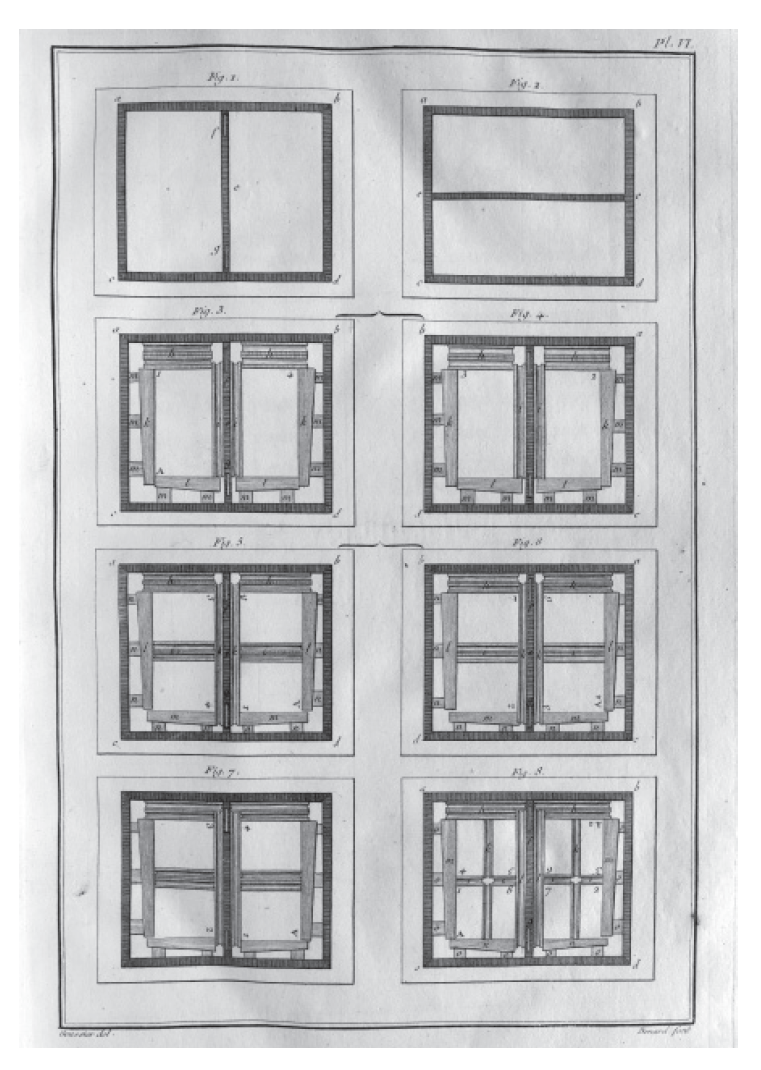
The forme was a frame made of wood or metal in which several pages were assembled to be printed. Here we see, respectively, an empty frame, a folio with two pages, a quarto with four pages, and an octavo with eight pages.
Usually, several compositors worked on one forme. Since the spelling of modern languages in the seventeenth century was not standardized, the way work was done in the printing house could affect the text. Compositors almost never followed the same spelling and made various types of mistakes.
Research into compositors and their peculiarities has been particularly crucial in studying Shakespeare’s plays. No manuscripts of Shakespeare himself have survived, and early editions are filled with errors and variants. At such times, it becomes important to know which compositor worked on a particular text at a given time, while also attempting to ascertain the underlying, now-lost copy. In Shakespeare’s case, the copy was not uniform but consisted of different transcriptions.
The thin water-based ink used for woodcuts, which could also be printed, was not suitable for the printing press because it did not adhere well to the metal of the type and often bled through the paper, allowing it to be printed on only one side. Printing ink was made from boiled linseed oil colored with soot, and such ink adhered well to the type and even better to paper. Similar ink had been used for centuries to print textiles, but it is not known whether Gutenberg was aware of this. He may have been inspired to make oil-based ink by the not much earlier invention of oil-based paint. Chinese inventors from the twelfth century, who also used individual, cast bronze characters, continued to use water-based ink and hand-rubbed a sheet. Comparing such Chinese printing with Gutenberg’s work immediately reveals why this method was not an option for him. The quality of Gutenberg’s printing would never have been good enough to withstand comparison with contemporary manuscripts.
This quality could only be achieved by placing a sheet of paper on a completely even setting and applying as much pressure as possible as evenly as possible. Presses that made this possible were known in the fifteenth century. Screw presses were used, among other things, to press grapes, and Gutenberg’s press was probably inspired by the wine press. When a printing press is placed next to a wine press, the significant differences become immediately apparent. A wine press has only one moving part, the vertically moving press. In the printing press, a second moving element has been added. The type was placed on a carriage that was slid under the press over a flat table, and after printing, it was pulled back. By the way, the hand press, as we know it, did not originate entirely from Gutenberg’s mind. Other printers made improvements. It is believed that Georg Lauer, a printer of German origin working in Rome, invented the carriage around 1472.
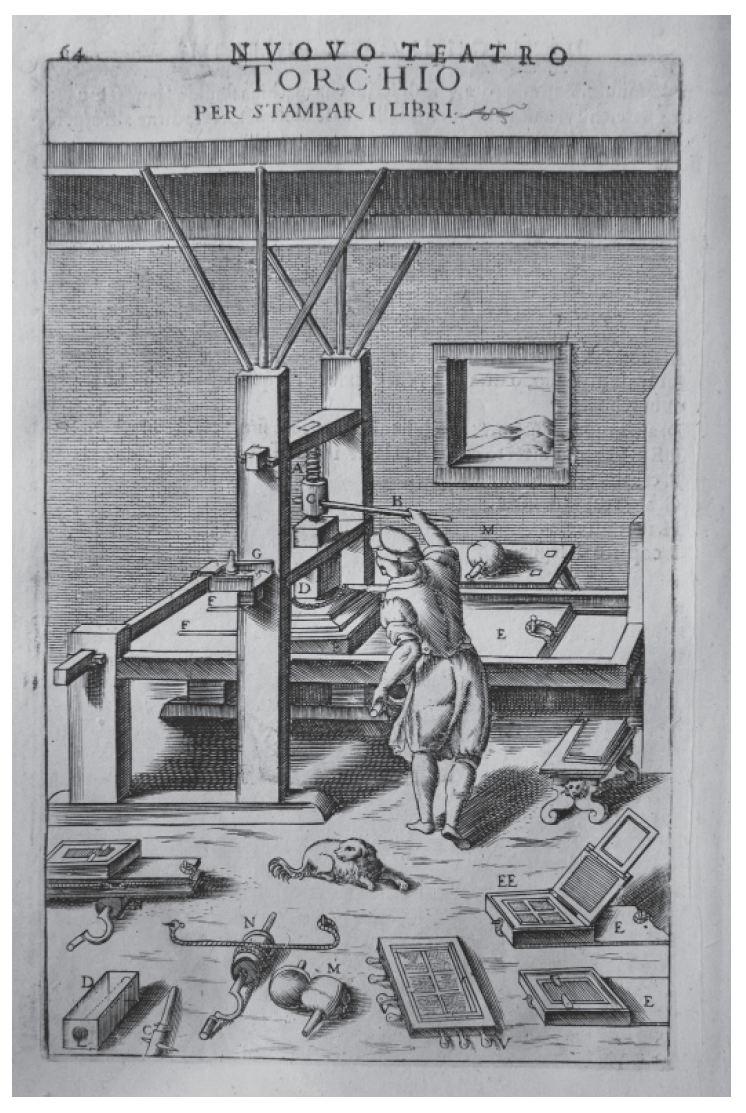
A seventeenth-century, not very accurate depiction of a printing press, from a book about machines. Many engineers created beautiful books full of machines, most of which were clearly intended as improvements of something that already existed. But you never find an improved version of the printing press.
Printers printed about 1200 sheets on both sides per day. The paper was lightly moistened before printing and hung to dry on lines along the ceiling of the workshop. The size of editions could vary from less than a hundred copies to many thousands, but it is not unreasonable to assume that a ‘normal’ edition was in some proportion to what printers produced per day. Printers could print one gathering per day of a book with an edition of 1200 to 1400 copies.
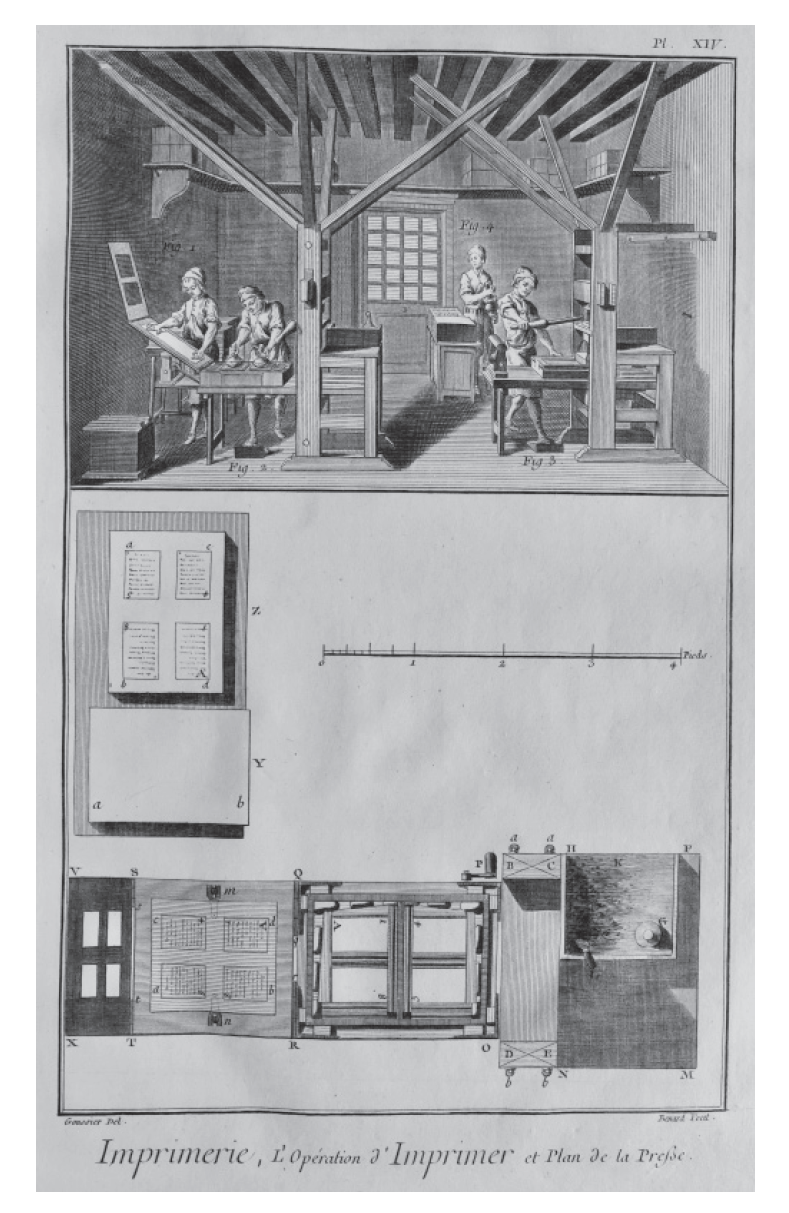
An extremely detailed depiction of a printing press. On subsequent pages, each component is depicted at actual size. Here, we see the press in use, and from above, where the forme with the type and the printed paper are clearly visible.
Two people operated the press. The type lay flat on a smooth plate that could be pushed under the actual press. One printer placed a sheet of paper on an unfolded flat wooden plate called the “tympan.” If the position of the paper was correct - it rested on small pins - a second plate, the “frisket,” was folded over the paper. The frisket was connected to the tympan by a hinge and consisted of a piece of parchment stretched over a frame with an opening that matched the type. Meanwhile, the second printer smeared the type with thick, sticky printing ink. In the nineteenth century, ink was applied with a rubber ink roller, which was relatively easy. Before that, such rollers could not be manufactured, and ink balls were used: an ink ball was a wooden stamp with a cushion of sheepskin filled with horsehair on the underside. Ink balls were smeared with ink, and then ink was spread as evenly as possible over the type with a rotating motion. Once the type was inked, the tympan and frisket, with the paper in between, were folded over the type, and the whole thing was maneuvered under the press. The printer pulled a horizontal wooden arm that set the vertical press in motion. The printing surface of the wooden press, which was in use until around 1800, was half the size of the type forme. Therefore, a sheet of paper was printed in two movements. Around 1800, the English Lord Stanhope developed an iron press with a plate twice as large as the type forme, making it the same size. The arm of the Stanhope press was designed so that with little effort, a lot of pressure could be exerted. This made it possible to print a sheet of paper in one go. Iron presses were made until the 1940s. There are still many in use, not only by hobby printers.
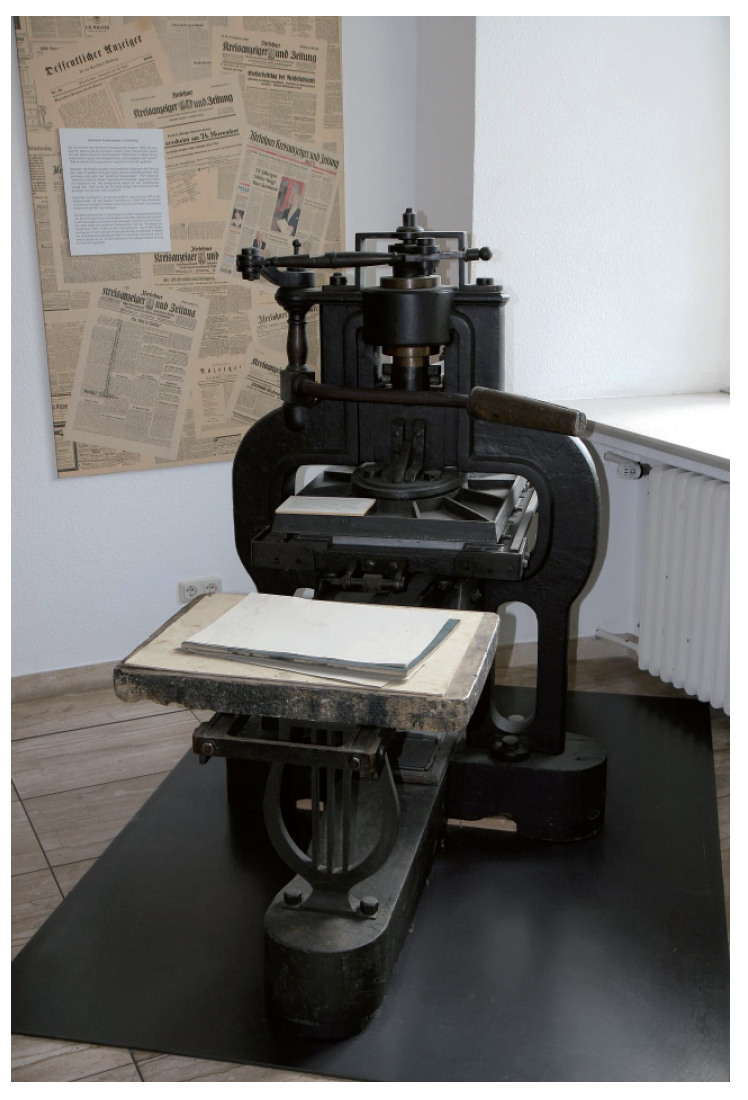
With a cast iron press, it was possible to print twice as fast as with a conventional wooden printing press.
There are more inventions that have lasted for centuries or even millennia, but they generally concern simple objects with a single function. The wheel, needle and thread, or the hammer, for example, have hardly changed in shape or function once they were invented. The art of printing books consists of not just one simple invention but is due to a brilliant idea. It must have started with a simple question: “How can I print a text in a simple way, somewhat like a woodcut, but better, more beautiful, and faster?” There are researchers who think that the art of printing books was an invention that had to be made because there was such a high demand for books in the second half of the fifteenth century. This is, of course, nonsense. In hindsight, we can see that the demand for books exploded in the second half of the fifteenth century. An increasing demand always leads to greater supply but not necessarily to radical innovations in how something is produced. That requires a genius.
*
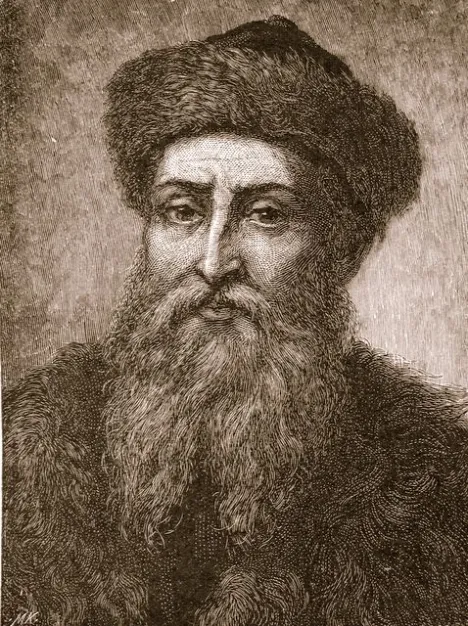
What did Gutenberg invent? The printing process encompasses
activities that are quite diverse. One can imagine the thought-process,
starting with a ‘what if …’
What if you could press letters, sentences, even pages on a sheet of
paper, instead of having to write it all down, letter by letter, word by
word? You would have to print on the recto and the verso or frontside
and backside of a sheet of paper but that was of course easy. And yes:
it would even be easier to print more than one page on the side of a
sheet to be able to fold and bind it afterwards. As the position of the
pages on the sheet was not sequential this called for some math. To put
each page on the right place was called imposition and it was known to
the scribes of an earlier age who wrote books by hand.
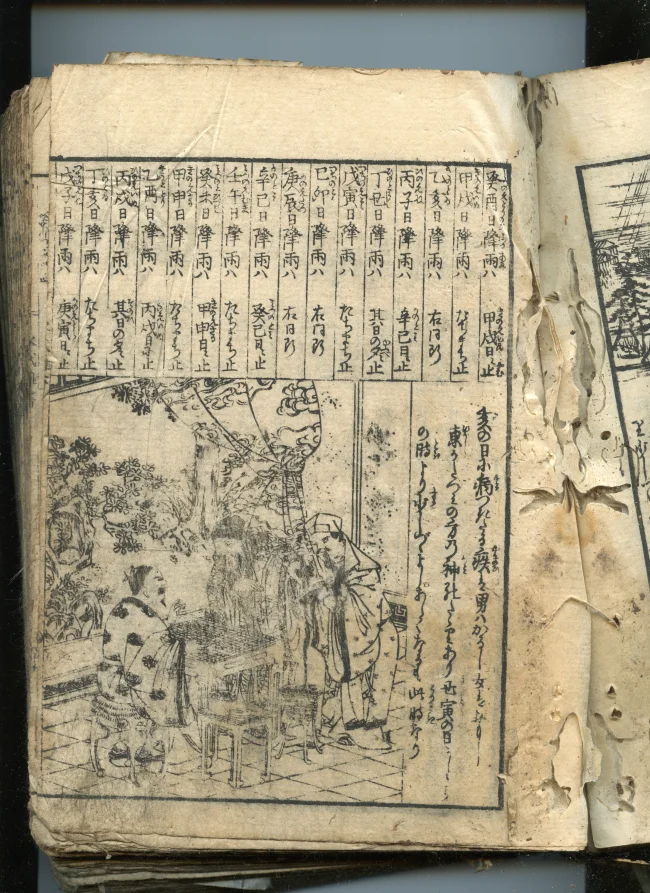
What if you cut each letter on a separate block so that you could use the letters again and again? The Chinese method of printing was to cut whole pages at a time on a block of wood and so did the makers of the so-called blockbooks that were published about or after the time Gutenberg started printing. But the cutting of whole pages in a tiny roman or gothic script was difficult — if not impossible at all — and uneconomical as the resulting block was to fragile to be put under a printing press. You could rub it of with your hands by placing a piece of paper on the inked wood thousands of times like the Chinese did but then you could only use one side of the paper. and the process was slower. You could also use such complete pages for one text.
The answer to this would be to use separate little blocks but you would soon find out that wood was to soft and sensitive to water and ink to put pages together from separate wooden letters. And was the cutting of hundreds of copies of each separate letter feasible at all? Using some kind of metal for letters was of course the answer — and so was casting them in series, instead of cutting them all separately. To cast letters you needed a matrix. How to create it? You could use sand or clay like the casters of silver and bronze did — this is how dentists still make crowns and how goldsmiths like Benvenuto Cellini worked in the days of Gutenberg. But you could also try and find a more permanent matrix. To be able to make that you had to create a punch that was struck in a small rectancle of copper and made to fit a mold later on. Dies and coins were made like that well before the classical era.
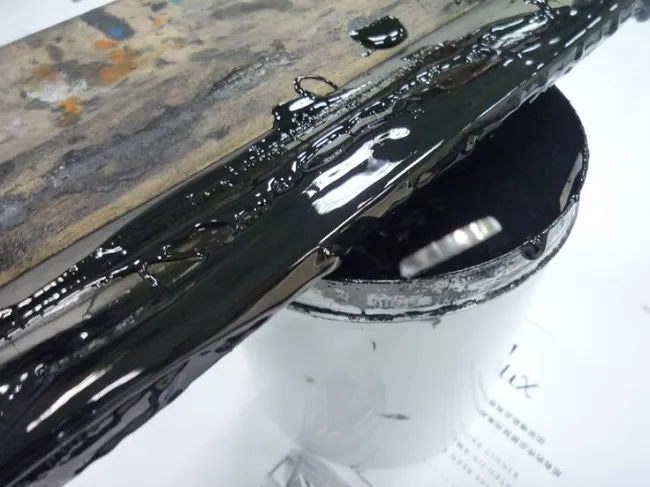
What Gutenberg did, was to combine different techniques that had existed for some time — and sometimes even for ages — giving them a twist of his own. The ink was probably something that he created out of nothing, but even that may have been related to the oil-based paints that had recently been invented by the Flemish painter Van Eyck.
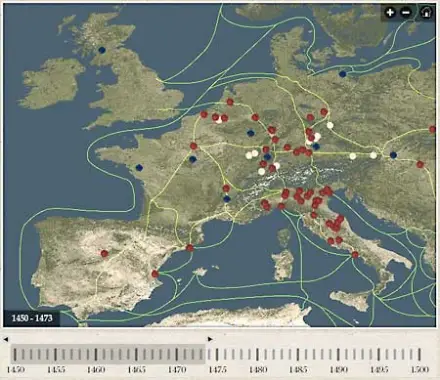
The invention spread like a wildfire over Europe. His successors Fust and Schoeffer were not as secretive as Gutenberg — who may have been after the money, by selling “manuscripts” that were made at a fraction of the cost of a written book but were sold for the full price. But in some old sources printing was called ‘artificial writing’ and maybe we should think of it as that and accept that there was no clear divide between before and after Gutenberg. You bought a book — the artificial kind became cheaper in time and a few snobs declared that they would not have them in their palaces since they did not like paper.
Some of the inventions ascribed to Gutenberg have been questioned. According to bookhistorian Paul Needham and scientist Blaise Aguerra y Arcas the variations in the letters show that Gutenberg at least in some of his books did not use matrixes as we know them from the 16th century. At least part of his material seems to have been casted in sand or perhaps some other not permanent material like plaster. As the detailed pictures of type in this book show there was a lot of variation in 15th century letters — even on pages that were printed by Jenson himself – who is credited by Lotte Hellinga as the inventor of the permanent matrix.
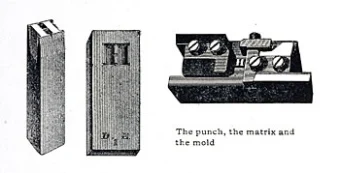
Perhaps Gutenberg did invent the matrix as it was used until the 19th century but did he not invent or use it when he started to print his first books. It seems that not every printer used permanent matrixes, but that some had their letters casted in not permanent ones as were used by goldsmiths of their days. A non permanent matrix makes casting of type a labor-intensive job: you have to recreate the matrix for every single cast. Casting letters in sand takes probably at least forty times as much time to get a usable amount of type as using a permanent matrix. Why would printers use such a less advanced technique? The answer may be that they simply did not have all the information on how it was done. The first printers may have had to reinvent parts of the printing-process.
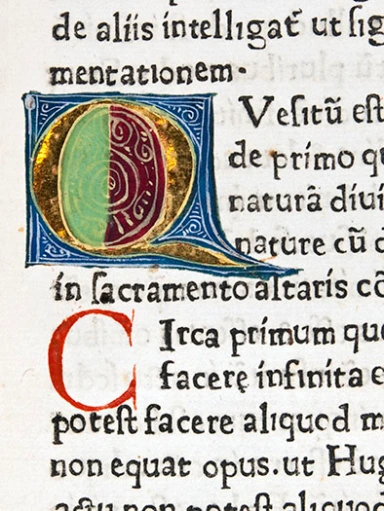
It took at least twenty years before printers did their work more or less in the same way. We are then well into the eighties of the fiftheenth century. Some pictures in this book show a diversity that give some support to this idea. On the other hand the letters we see on the page are at least six steps away from the original design on top of the punch. With a punch one could make a lot of matrixes that would have to be adjusted and that was a process that may have created variations. Then there is the casting: handwork that needs a lot of dexterity and easely results in quite diverse letters — siblings that were looking different but were all coming from the same matrix. Simply by re-using casted type even more variation was created, and inking and the uneven quality of the paper also did their part.
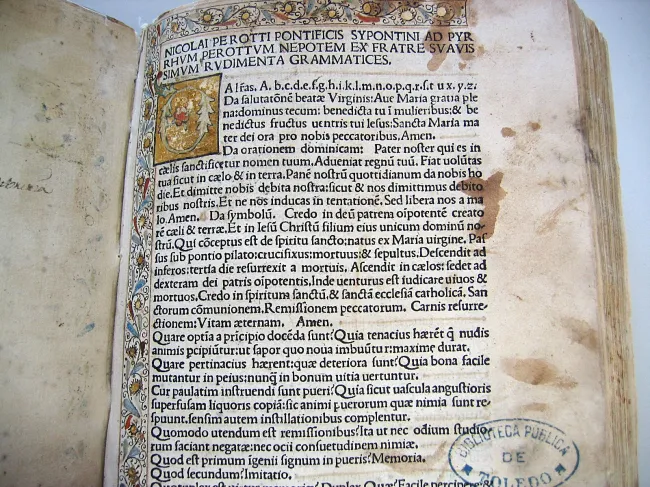
In the beginning there may not have existed a dichotomy between the written book and it’s printed cousin. Buyers were supposed to have their printed books rubricated, historiated and bound, just like they did before when they ordered their books to be written at one of the ateliers that could be found in any city. Most of the earliest printed books that survived, have spend time with the rubricator and the painter. But perhaps these copies own their survival just to that. There are of course lots of books that were meant to be touched up but that never saw a paintbrush. This completing of books by hand was done until the middle of the 16th century but the emancipation of the printed book from the artisans started somewhere in the seventies of the 15th century. Erhard Ratdolt is a printer who deserves to be named as one of the great innovators. He was one of the first who had his initials and ornaments cut in wood so they could be printed instead of having to be painted in in each single copy of an edition (in those days 300-500 was probably a normal print run).
The mechanization of all activities that were part of the process of creating books changed the way books looked in many ways. The one reason for this was the disappearance of color from the book. The rubricator touched up all letters and words with red or blue ink that deserved special attention from the reader or helped him on his way through the text. But printing in color was difficult and time-consuming and thus expensive. The printers had to find other ways to express the different kinds of information that could be found on the pages of their books. They did this by using white as a mean of dividing paragraphs, by using smallcaps, the italic and all the other ways that we now use to structure our texts even if we are writing them by hand. Eventually color returned to the book. But not as a way to bring articulation to the text. It was used for illustrations and for artistic expression.
[PD]